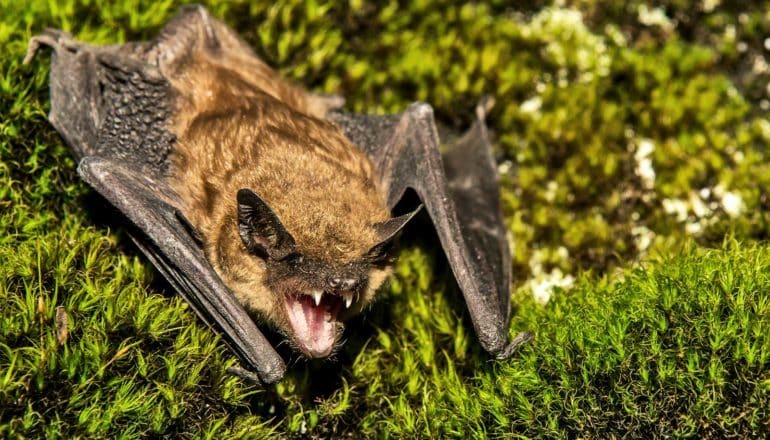
Bats in the Sierra Nevada appear to be well-adapted to wildfire, researchers report.
Bats face many threats—including habitat loss, climate change, and emerging diseases, such as white-nose syndrome, but it appears wildfire isn’t one of them.
Researchers used acoustic surveys to test the effects of burn severity and variation in fire effects, or pyrodiversity, on 17 species of bats in the region. Individual species responded to wildfire differently, but overall species richness increased from about eight species in unburned forests to 11 species in forests that experienced moderate- to high-severity burns.
“Bats rely on forests for a number of resources,” says lead author Zack Steel, a postdoctoral researcher with the University of California, Davis and the University of California, Berkeley who conducted the study as a UC Davis doctoral candidate. “The key is recognizing that natural fire is useful to them because it creates a variety of habitat conditions. They are adapted to it. Many species seem to actually benefit from fire.”
Wide open spaces
Many forest bats adapt to dense spaces, while others are associated with open habitats. Researchers were surprised to find species from both groups preferred burned forests to unburned or minimally burned forests. Steel thinks this is because decades of fire suppression created uncharacteristically dense forests.
“Our forests are now so dense that even clutter-tolerant bats are preferring burned areas,” he says. “There are big areas of forests that haven’t seen fire in a century. When fires do occur, they create openings for these species.”
These openings are entryways for bats to better find insects to eat. Dead trees or snags even provide roosting habitat for some bats.
The study lends support to the practice of prescribed burns and managed wildfire, where lightning-caused fires are allowed to burn in remote areas in Sierra Nevada forests.
Bats after California fires
As nocturnal animals with no audible call or song, bats are relatively understudied. They use echolocation, in which they emit a sound humans cannot hear. They listen as the call bounces off an object, marking its location.
To learn how wildfire is affecting bat habitat, researchers used acoustic surveying technology with ultrasonic microphones to track echolocation patterns, which vary among species. They then converted the recordings into spectrograms, or visualizations of bat calls, that allowed them to identify the species present and compare bat occurrence rates to habitat conditions.
The study areas included California forests in the Sierra Nevada Mountains which the 2013 Rim Fire, 2004 Power Fire, and 2012 Chips Fire affected.
With recent dramatic changes in wildfire patterns in the Sierra Nevada, shifts in the composition of species are likely underway, but “not everything is losing,” Steele says.
The paper appears in Scientific Reports. Additional coauthors are from the USDA Forest Service, Point Blue Conservation Science, Bat Conservation International, UC Santa Cruz, and UC Davis.
Source: UC Davis
The post Bats might actually benefit from wildfires appeared first on Futurity.
from Futurity https://ift.tt/2qnYS0j
No comments:
Post a Comment